Does All Tea Really Come From The Same Plant?
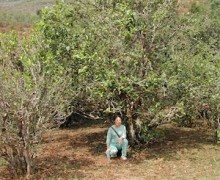
One axiom that is typically taught to new tea students is that “all tea comes from the same plant.” If these students continue to learn about tea and study Chinese tea in any depth, they will discover that this statement is almost as wrong as the old belief that black tea and green tea come from two different plants. They may even start to believe there are many different teas produced from many different plants, as the Chinese believe. The different plants are tea cultivars, and to the Chinese, the idea that “all tea comes from the same plant” is absurd. It is not just a matter of culture and language here, it serves the international market in its marketing of commercial tea.
I can almost hear the teeth of Western tea educators and tea merchants grinding as I type this. These are Chinese beliefs, which are certainly the elephant in the room when it comes to Western tea education. Finding out what the Chinese know about tea is not an easy task. Odder still, the Chinese have very little place in defining tea and its categories, considering they know more about tea than anyone. There are even quite a few universities that offer doctoral degrees in a number of fields related to tea. Still, tea in the international market is defined outside of China and that definition does not conform to Chinese standards.
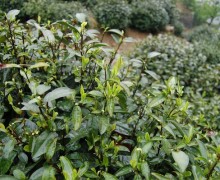
The Chinese are just discovering the concept of intellectual property and have, until recently, made no effort in protecting the intellectual rights that would certainly accompany a French wine. As in wine, a type of tea (defined by Chinese standards) is only authentic if it includes information on the cultivar, place of origin, the particular processing, and the very defined characteristics manifest in the final product (ie. shape of processed leaf). Any tea that is outside of this standard is, by definition, fake. In China, the customer that buys fake tea is obviously cheated, but there is currently no consumer protection or support for those tea makers producing within the Chinese standards. Certainly one could expect that people outside of China have also been cheated. If I pay a good price for a Parmesan cheese that is labeled “Parmesan”, but it comes from Wisconsin, haven’t I been cheated? The cheese may taste similar to true Parmesan because it is made in exactly the same way, but hasn’t the producer Parma also been cheated, since the label of “Parmesan” has been compromised and does not connote the cheese made under strict Italian standards?
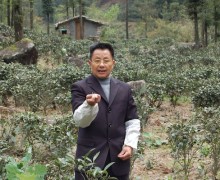
Even though there are no active efforts from China to protect its tea production, there are very strong exporting restrictions regarding tea and other consumable products that took effect in 2008. As far as tea is concerned, it must be tested before it can qualify for legal export, and as part of the exporting inspection process, the tea is evaluated according those previously mentioned standards set up by the Chinese government. If a tea is called Long Jing, it must conform to those standards: the tea base must be registered (which includes soil and water samples along with a documentation of farming practices) and it must also meet the requirements of the country of import in regards to the forms of contaminates. The Chinese government will not allow ‘puer’ made in Guangdong province to be exported using the name puer, according to export reforms made in 2008, much to the chagrin of the Guangdong tea makers that have been faking puer for 50 years, but still says nothing about Malawi calling tea that it is making puer. Of course Chinese trading companies know how to game this system. Moreover, these tea standards only effect Chinese exports, so that doesn’t mean that Long Jing you are drinking wasn’t made in Africa or South American where the majority of Europe’s and America’s originates from.
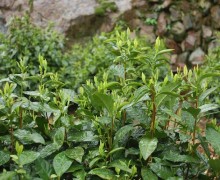
A few years ago the international tea industry got together and signed an agreement that addressed how tea categories would be determined by processing alone. Thus the cultivar and place of origin became completely irrelevant. Moreover, the processing that was defining these tea categories was concerned only with oxidation levels, which excluded any detailed processing. Luo Shou Jun represented China at this conference and refused to sign. Nevertheless, these loose definitions were adapted by the international tea community. Therefore this resulted in the industry’s ability to legitimately say that all tea comes from the same plant (and through extrapolating: any tea can be made from any cultivar). Sound a little bit absurd?
Ok, so what is a cultivar? A cultivar is defined as a plant whose origin or selection is primarily due to intentional human activity. That means that people intend to develop a cultivar with a specific result in mind. Cultivars have been developed for thousands of years in China, whereas the international commercial tea industry has only been in the business for a little over a century and a half.
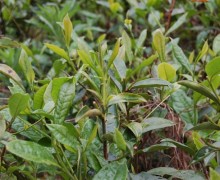
It is safe to say that all tea originates from the similar ancient and wild source, and it is certainly true that all tea that ends up in your cup originates from a cultivar. And yes, I know that there are a lot of people saying that they are sourcing wild tea from all over China, but that simply isn’t true. A cultivar can go unattended, that doesn’t mean it reverts back to being wild, just untended.
A cultivar has definable characteristics that make it different than other cultivars of the same family, and those characteristics have been honed from generation to generation to make a particular tea. No one has cataloged the cultivars in China, but rest assured the number is not small. The Dian Hong Research Institute has more than 200 cultivars in its gardens. Even now no one knows the link in the evolutionary process between large leaves and small leaves. The information was lost before history could record it; the small leaf first being recorded as a cultivar around 2000 years ago.
Nigel Melican, who is in my opinion the leading expert in commercial tea in the international market (excluding China), will do a workshop this year at the “World Tea Expo,” ironically called “Debunking Tea Myths: Don’t Lie To Your Customers.” I suggested to him during an online discussion that perhaps he might address this statement-turned-myth: that “All tea comes from the same plant.” He refused, stating that indeed it is possible to make any tea from any bush, and that he could do so with his plants in Africa and still have his product be commercially viable. I guess he meant someone would buy his tea regardless of where it came from.
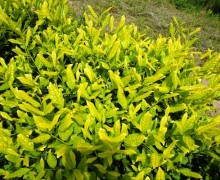
Nigel says with certainty that puer could be made from a Longjing bush. However, that has never happened, nor could it considering the unique microbiology of the leaves found only in Yunnan that is conducive to the natural fermentation of the tea that makes “puer” puer. You can make both red and white wine from the same grape, but you certainly can’t make a Merlot into a Malbec, the distinguishing factor here being the cultivar.
It’s a bit scary to disagree with Nigel. I have been reading his commentary online for years, but in this case he is wrong. I only mention Nigel directly because he is the leading Western tea expert and this is a fundamental issue. I have the deepest respect for him, as would any of the Chinese tea scholars or tea producers that I know. He is a wealth of information about tea and its commercial production.
However, it is important to note how the international tea industry has a vested interest in maintaining the belief that “all tea comes from the same plant.” It allows them to make teas that the industry can name without being held to the rigorous standards that define Chinese tea. Plus they are stuck with a very limited number of cultivars in comparison to China, because Chinese cultivars are notoriously difficult to grow outside of China (which the British learned in the middle of the Ninetieth Century, and since then the Chinese have not be keen on allowing foreigners to experiment with their cultivars). Although there has been some commercially successful white tea produced outside of China: a few years ago, a grower making white tea in Assam asked me why he couldn’t get as much white hair on his tea as the Chinese do to which I replied “your tea doesn’t originate from Da Bai Hao bush”. Cultivars do make a difference, not just in appearance.
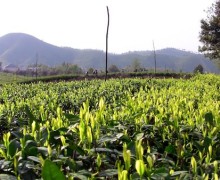
I think it is important to make the distinction that white tea is a category of tea, not a specific tea. Bai Mu Dan would be an specific, individual tea, that adheres to even more definitions that qualify its name. Puer is also is a category of tea, but the category comes with it’s own detailed characteristics that limits it’s production to Yunnan. No other category has this criteria and only Yunnan has the right cultivars and environment that make it possible to make a true puer. So you can see how complicated the issue is.
It is also interesting to note that thanks to the help of the French, only teas that are produced in the Darjeeling area can bear the name Darjeeling. There are multiple cultivars being used in Darjeeling, where they are making what in many cases would be classified as wulongs, but are being sold as black tea. It is confusing and doesn’t adhere to any specific tea standards, but Darjeeling teas are nevertheless protected.
All tea producers that use a cultivar along with skilled and detailed processing have the right to protect their intellectual property, whether it be the Chinese, or the African tea Nigel Melican mentioned. Standards need to be set that are inclusive and meaningful. Perhaps the Chinese have been excluded from setting international standards for too long (and when they were included, they were ignored if they did not agree). The Chinese also need to be more open when it comes to sharing information about tea, both in the cultivation and tea making processes.

Currently black tea is for the first time in history is selling for very high prices in China. Won’t it be interesting if the great Indian and Sri Lankan black tea makers started focusing on the Chinese market instead of Europe and the United States? It is an interesting thought.
The answer to the question about whether or not the statement ‘all tea comes from the same plant’ is relative, depending on which side of the fence you are standing. It is a vague and less than accurate statement, which is to say it should not be taught as the first fact to learn about tea. New students to tea should first understand that, as the Chinese say, “You can study tea all of your life and not learn the names of all of the teas.”
The photos were taken by Austin Hodge representing just a few of the hundreds of Chinese tea cultivars.
